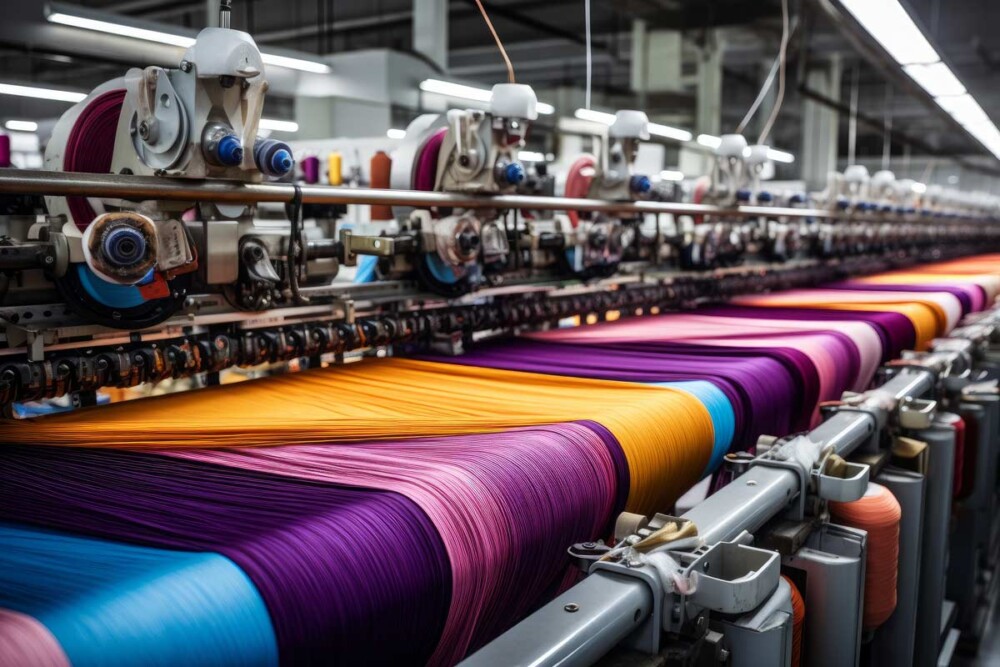In recent years, fast fashion has conquered millions of consumers thanks to low prices and constantly changing trends. Recently, however, Shein has come under the spotlight for using potentially toxic fabrics and materials that pose a risk to health and the environment. Manufacture Foderami Cimmino, which has made safety one of the fundamental characteristics of fabrics offered online, explains the dangers associated with some fabrics, how to recognize them and what alternatives to choose to protect your health and that of the planet.
Why Shein’s tissues are under accusation: analysis and results
Shein, one of the most well-known fast fashion brands, has been repeatedly criticised for using low quality materials, often containing hazardous chemicals. A German website (https://www.oekotest.de/kosmetik-wellness/Test-zeigt-Shein-Mode-teilweise-voller-giftiger-Chemikalien_14755_1.html.) has tested some Shein garments and found that they contained phthalates, lead, formaldehyde and other toxic substances, as reported by authoritative sources such as SkyTg24 (https://tg24.sky.it/cronaca/2024/08/29/shein-tessuti-toxics-republique) and Repubblica (https://www.repubblica.it/green-and-blue/2024/08/28/news/shein_vestiti_toxici_test_tedescoco-423466094/) These chemicals can cause short-term and long-term health problems, such as skin irritation, allergies and in extreme cases endocrine or neurological disorders.
Laboratory tests have shown that some clothes contain levels of chemicals above the limits allowed by EU regulations. For example, phthalates, which are used to soften plastics in synthetic fabrics, are known to be endocrine disruptors, linked to fertility and developmental problems in children.

Phthalates, lead and other toxic substances in clothing: the health risks
Phthalates and lead are not the only culprits. Other toxic substances such as formaldehyde, used to prevent fabrics from crumbling, and azo dyes, a category of synthetic dyes that can release carcinogenic amines, are also often found in fast fashion products.
These materials can come into contact with the skin and slowly release their dangerous chemicals, increasing the risk of developing chronic diseases. Formaldehyde in particular can cause severe skin irritation and allergies, while azo dyes are suspected of being carcinogens. Wearing clothes containing these substances is not only a danger for the wearer, but also for the producer and the environment, since during the production process and washing many of these substances are dispersed in air and water.

How to recognize and choose safe clothes and fabrics online
Buying safe clothes online may seem like a challenge, but there are some tricks that can help you make more informed choices. Here are some tips for recognizing safe tissues:
- Check the label: If the garment’s label does not provide detailed information on the materials used, it may be a warning sign. Try to avoid garments that do not clearly specify the components.
- Certifications: Search for garments that have safety and sustainability certifications such as Oeko-Tex Standard 100, GOTS (Global Organic Textile Standard) or Bluesign, which guarantee the absence of toxic substances in the fabrics.
- Research the brand: Before you buy, find out about the company’s transparency and commitment to the environment and safety. Brands that provide clear and accessible information about their production practices tend to be more reliable.

In addition to health risks, the toxic tissues present in Shein garments contribute to serious environmental damage. The production and disposal of synthetic fibres treated with polluting chemicals aggravates the pollution problem. During production, large quantities of toxic substances are released into the water and air, contaminating ecosystems and endangering fauna and flora.
Safe and sustainable alternatives to fast fashion: how to protect your health
To avoid exposure to toxic substances and contribute to a more sustainable future, you can move towards the best clothing fabrics represented by safer and more sustainable alternatives. Here are some solutions:
- Buy from safe brands: There are more and more brands that focus on safe materials, such as certified fabrics selected by Cimmino. These brands often offer transparency about their production chains and guarantee garments made without the use of hazardous chemicals.
- Handmade and tailor-made clothing: Supporting small local producers and artisans not only reduces the environmental impact, but also allows you to get unique garments made from high quality materials.

European regulations and toxic tissue controls: what the law says
The European Union has implemented a number of regulations to regulate the use of hazardous chemicals in tissues. The REACH (Registration, Evaluation, Authorisation and Restriction of Chemicals) regulation is one of the most stringent in the world and aims to protect consumers from the risks associated with hazardous chemicals. However, the controls on products imported from non-EU countries such as those sold by Shein are often insufficient.
Buying clothing made from safe and controlled fabrics, like those of Cimmino, not only protects your health, but can also contribute to a more sustainable future for the planet.



